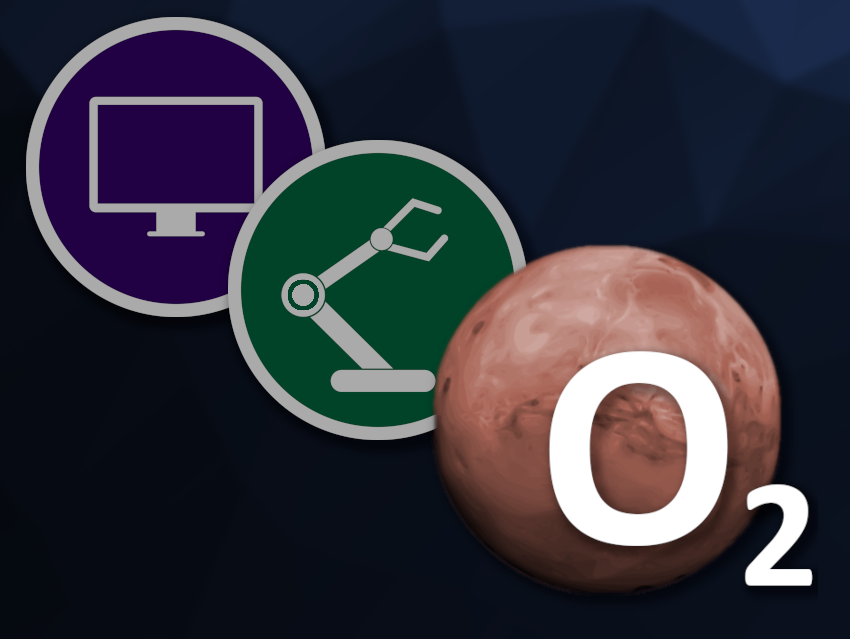Sustaining human life on Mars is a common dream and a frequent topic in fiction. To achieve this in reality, a reliable oxygen supply is required. However, synthesizing oxygen from local Martian resources can be challenging.
Weiwei Shang, Jun Jiang, Yi Luo, University of Science and Technology of China, Hefei, China, and colleagues have developed a robotic system that uses artificial intelligence to optimize catalysts for the oxygen evolution reaction (OER) from water driven by solar energy, using Martian ores as materials. The process is completely automated with no need for human intervention, including ore pretreatment, catalyst synthesis, testing, and intelligent optimization.
The team used samples of Martian meteorites to represent Martian ores, which were first analyzed using laser-induced breakdown spectroscopy (LIBS) using the robotic system. This is followed by catalyst synthesis, which includes weighing the samples, dissolving them, mixing the solutions, adding a base, centrifugation, and drying. This process gives metal hydroxides, which are combined with a Nafion adhesive to obtain working electrodes for electrochemical OER testing. The data from the catalyst tests is collected and sent to the computational part of the developed artificial “chemist”.
The system uses molecular dynamics (MD) simulations to generate possible catalyst structures and density functional theory (DFT) calculations to estimate the catalysts’ activity for the OER. Machine learning using a neural network (NN) is then employed to build an improved prediction model in order to find an optimized catalyst.
According to the researchers, the AI chemist built a predictive model in six weeks by learning from nearly 30,000 theoretical datasets and 243 experimental datasets and arrived at a promising OER catalyst. The catalyst contains Mn, Fe, Ni, Mg, Al, and Ca and can promote the production of oxygen at −37 °C, which mimics the temperatures on Mars.
- Automated synthesis of oxygen-producing catalysts from Martian meteorites by a robotic AI chemist,
Qing Zhu, Yan Huang, Donglai Zhou, Luyuan Zhao, Lulu Guo, Ruyu Yang, Zixu Sun, Man Luo, Fei Zhang, Hengyu Xiao, Xinsheng Tang, Xuchun Zhang, Tao Song, Xiang Li, Baochen Chong, Junyi Zhou, Yihan Zhang, Baicheng Zhang, Jiaqi Cao, Guozhen Zhang, Song Wang, Guilin Ye, Wanjun Zhang, Haitao Zhao, Shuang Cong, Huirong Li, Li-Li Ling, Zhe Zhang, Weiwei Shang, Jun Jiang, Yi Luo,
Nat. Synth. 2023.
https://doi.org/10.1038/s44160-023-00424-1




